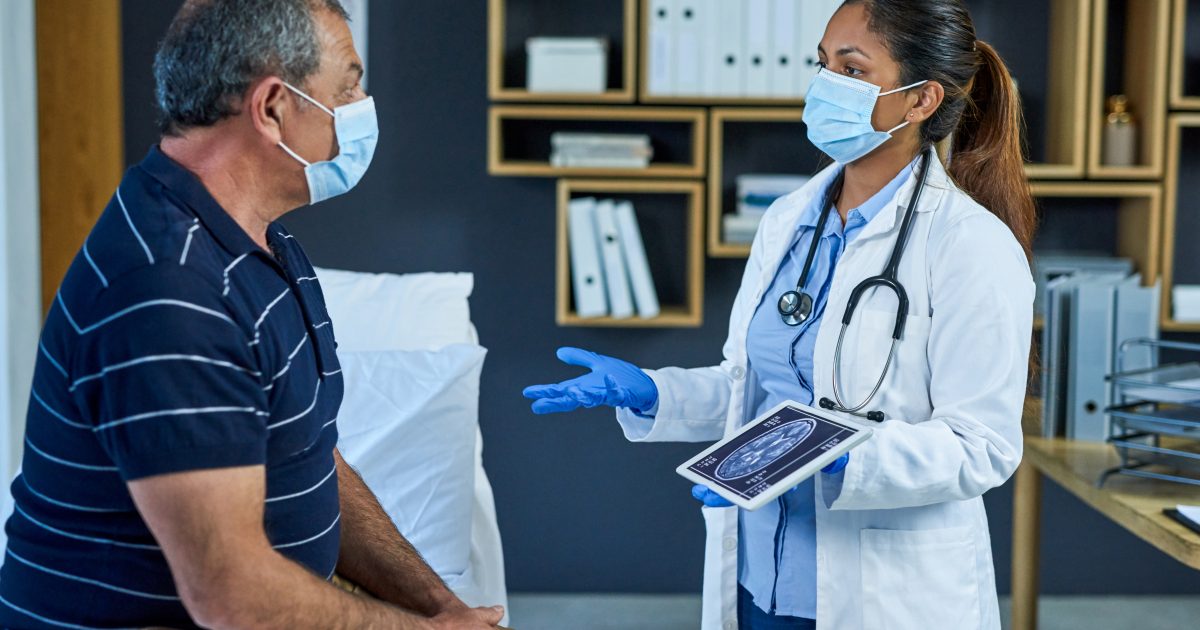Treatment of Von Hippel-Lindau syndrome (VHL) is associated with numerous challenges under the impression of its varying manifestations. Treatment options are based on several fundamental aspects like the stage of the disease, type, size, location of the tumor, previous treatments, and pre-existing medical conditions. VHL patients may believe that there is a higher possibility of a dismal outcome, especially for those who develop cancerous tumors.
Since radiation therapy is one of the main pillars in oncology, we've compiled all the data you need to know about Von Hippel-Lindau radiology treatment in this article.
Von Hippel-Lindau Disease In a Nutshell
Read MoreSymptoms for VHL vary significantly according to the type, size, and location of the tumors. VHL can cause a multitude of tumors and cysts, which either present as cancerous or benign (noncancerous).
What are the most common VHL-associated tumors?
The most commonly associated tumors (cancerous and non-cancerous) with VHL include the following:
- Hemangioblastomas a type of benign tumor (non-cancerous) that are found in the central nervous system(CNS) in organs like the brain, spinal cord, and retina of the eye
- Pheochromocytoma a benign tumor on the adrenal gland (found above the kidney) that secretes many functional hormones like cortisol and adrenaline
- Endolymphatic sac tumor benign tumors found in the inner ear
- Clear cell carcinoma (ccRCC) is a type of kidney cancer
- Neuroendocrine cancers pancreatic cancer
These tumors can result in unpleasant and life-threatening complications that affect the quality of life of VHL patients. Thus, it's vital to find and treat these tumors as early as possible before they can negatively impact your health.
Below are some of the signs of the disease that can occur when tumors and cysts (both cancerous and noncancerous) form in different parts of the body:
- Blindness from tumors in the retina of the eye.
- Balance issues and weaknesses of different parts of the body from tumors in the brain.
- Impaired hearing or balance issues from tumors of the inner ear called endolymphatic sac tumors (ELST).
- High blood pressure, episodes of racing heartbeat, palpitations, nausea, headaches, vision changes, sweating, and turning pale from pheochromocytoma tumors of the adrenal gland.
- Blood in the urine (hematuria) from cancerous kidney tumors (renal cell carcinoma).
Can VHL be cured?
So far, there isn't any cure available for VHL, but there are treatment options that help manage the symptoms and control tumor growth. However, many clinical trials are underway that test the safety and effectiveness of new promising candidates.
What are the treatments for Von Hippel-Lindau syndrome?
The main treatment goal for VHL is to manage the symptoms of the tumors and stop their growth or remove them altogether if possible. For this, there are many treatment options, and they include the following:
- Surgery
- Chemotherapy
- Immunotherapy
- Targeted therapy
- Cryoablation
- Medications (like belzutifan)
- Radiofrequency ablation (RFA)
- Radiation therapy or radiotherapy
The choice of which treatment option to take will differ from patient to patient depending on the size, location, and type of tumors. You should consult your doctor on the best treatment plan suitable for you.
Von Hippel-Lindau radiology
Radiology for VHL is a treatment option that utilizes radiation beams (neutrons, protons, gamma rays, x-rays, or other sources) to either kill tumor cells or inhibit their growth. There are different types of radiation therapy techniques, and they can either be used alone or paired up with other treatments depending on your condition.
The primary treatment of all VHL-related tumors is surgical resection, RFA, and radiotherapy. This is especially true for patients who don't respond to other treatments or medications and have a non-resectable tumor that can't be appropriately accessed through surgery to be removed.
Types of radiation therapy
External radiation therapy and internal radiation therapy are the two types of radiotherapy that are most frequently used. The decision of which one you should undertake goes back to your doctor according to many factors they take into consideration like the type of tumor, affected organ, surrounding tissue, size of the tumor, location of the tumor, your age, overall health, and other treatment protocols that you will or have already been subjected to.
Before radiation therapy begins, there's a mockup stimulatory session that's first done where your radiology team will perform imaging scans to map your treatment area and figure out the right dose for you.
External radiation therapy
This happens inside a large machine where you lie there without moving, and the machine inflicts external beam radiation into a specific area on your body (the area where the tumor is located) and targets it from different directions.
The aim here is to only direct radiation beams onto this specific area alone to minimize harm to the surrounding area.
Internal radiation therapy (Brachytherapy)
In this technique, your doctor will put a small device (implant) that emits radiation in your body near the location of the tumor. These devices can come in several forms or shapes like (capsules, balloons, wires, ribbons, tubes, needles, and seeds).
This is typically done in an operating room where your doctor can implant the device properly.
Similarly, there's a liquid form of the internal radiation treatment, but this one can be infused directly through the mouth or by injection.
Side effects of radiation therapy
The side effects of radiation therapy can appear right after treatment or appear later, after months or even years. These side effects will differ from one patient to the other according to the amount of radiation they're exposed to and the type and location of the tumor. The impact of radiation can result in different side effects depending on which organ is impacted by these beams.
Here are some of the most common side effects that you may experience when receiving radiation therapy:
- Tiredness or fatigue
- Skin problems (skin redness, inflammation, swelling, itching, and blistering)
- Hair thinning or loss
- Reduction in your blood count
- Nausea and vomiting
- Loss of appetite
- Dry mouth
- Tooth decay
- sexual problems (changes in menstruation, lowered sperm count)
Thus, discussing with your doctor what to expect with Von Hippel-Lindau radiology treatment is essential.
Von Hippel-Lindau radiology follow up
You will have to follow up with your doctor after the end of your radiation therapy treatment so that they can assess your progress. During this time, you can consult your doctor about other specific side effects, share any concerns or questions you might have, and learn how best to manage these symptoms.
Questions you need to ask your doctor
- Am I eligible to undergo radiation therapy?
- What should I expect after beginning radiotherapy treatment?
- What's the effect of radiotherapy treatment on my VHL?
- Which treatment option is more suitable for my case?
- How will radiation therapy affect my sexual health?
The Bottom Line
Von Hippel-Lindau radiology treatment provides great benefits when it comes to shrinking tumors, destroying cancer cells, and managing their symptoms. Whether you go for the external or internal radiotherapy options will be determined by your doctor.
Your doctor will also decide the duration, the dose of your treatment, and if you should combine it with another therapeutic option like immunotherapy or chemotherapy, depending on your condition and the best treatment plan available.
That being said, it's important to note that many side effects associated with radiation therapy like fatigue, nausea, vomiting, skin problems, hair loss, and others. But the good news is these side effects can be managed by some practices and treatments.
Learn more about SurvivorNet's rigorous medical review process.





